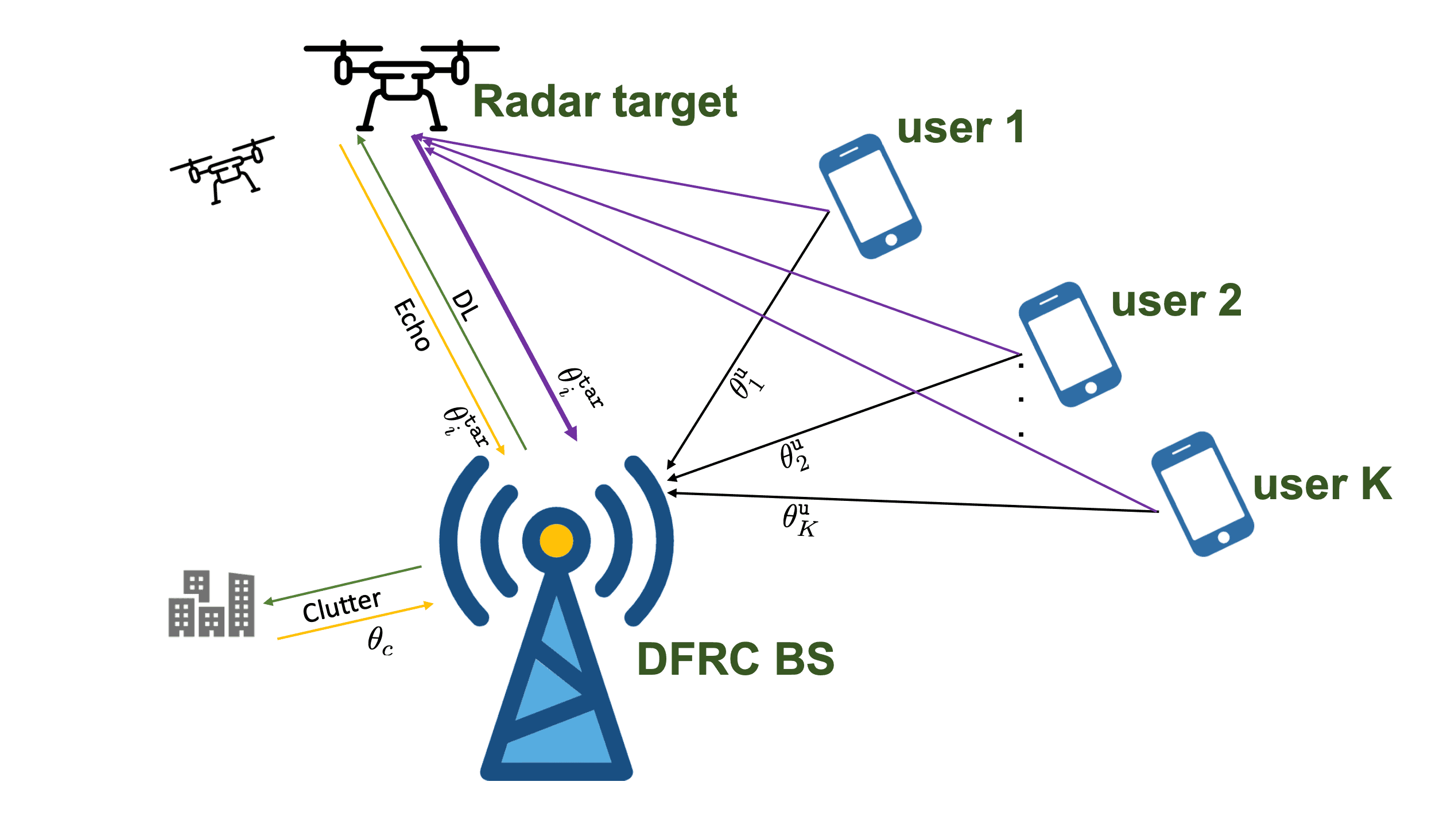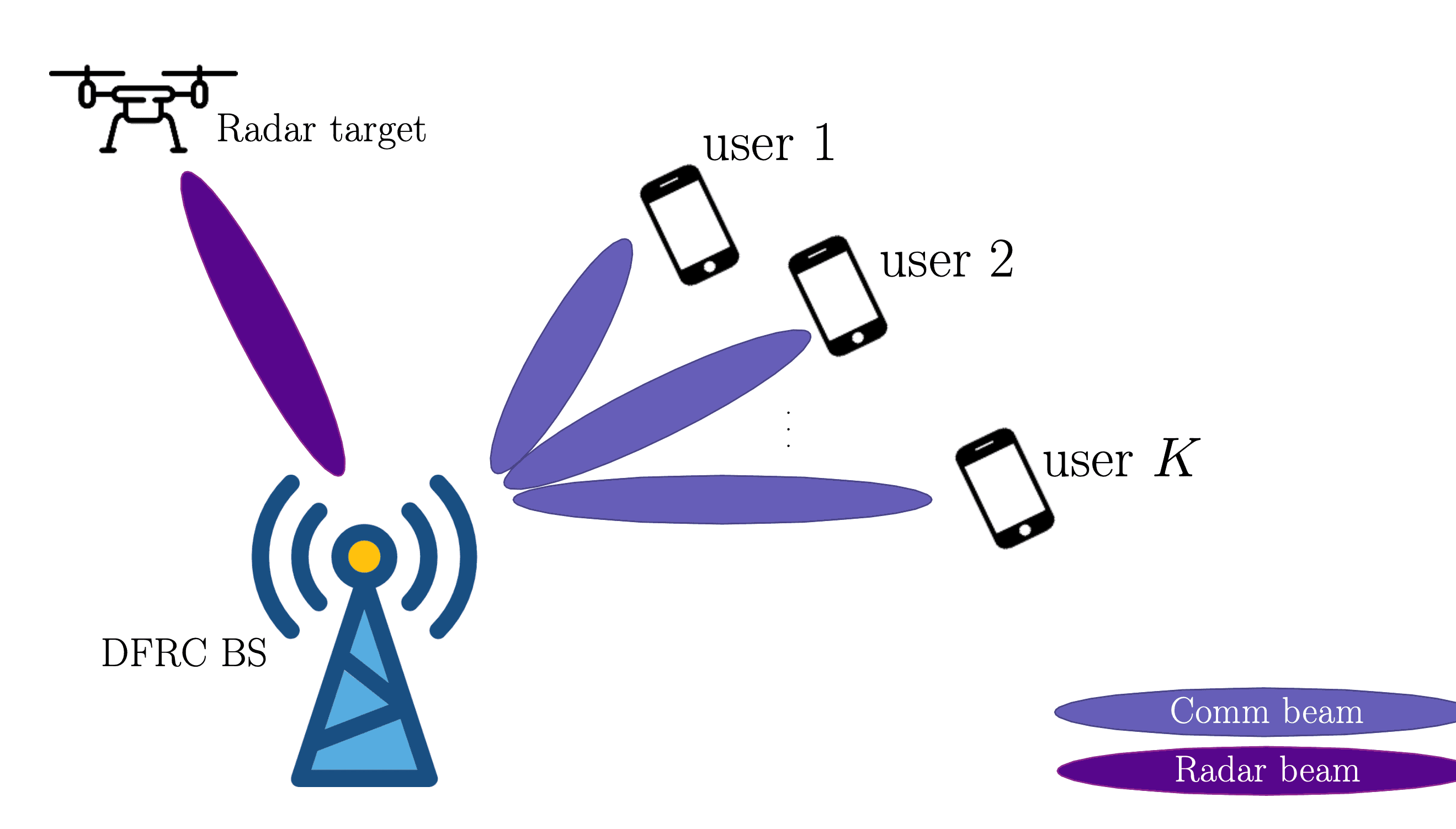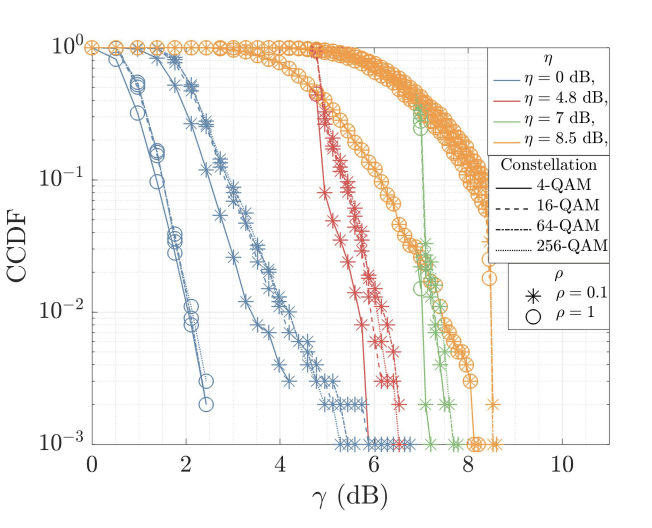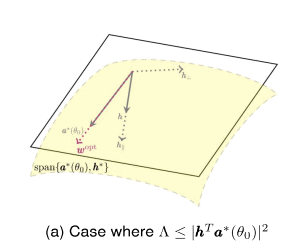Integrated Sensing and Communication (ISAC)

NYU Wireless P.I.s
Research Overview
6G technology is poised to enable a wide array of services, encompassing everything from haptic telemedicine and VR/AR remote services to holographic teleportation with extensive eXtended reality (XR) capabilities, as well as Blockchain integration, among others. What sets 6G apart is a new feature termed Integration of Sensing and Communication (ISAC), a pivotal and distinctive attribute that extends beyond mere communication capabilities. The collaborative and convergent nature of ISAC opens doors to innovative applications across various domains, including the automotive sector, unmanned aerial vehicle (UAV) operations, and robotics. ISAC’s spectrum efficiency is a standout advantage, allowing the dynamic allocation of resources for both sensing and communication tasks, optimizing resource utilization.
Furthermore, ISAC facilitates hardware resource sharing between radar and communication functions, resulting in reduced physical-layer modem size and cost. These benefits, however, come with their set of challenges and research questions. Key areas of concern include efficient resource reuse and spectrum sharing, the trade-offs between high communication rates and high-resolution sensing performance, privacy and security considerations, as well as practical shared waveform design.
This project focuses on the practical waveform design aspect from ISAC perspective, positioning dual-functional radar and communication base stations as central key elements in the future of 6G cellular networks. The primary objective is to develop efficient algorithms and designs using optimization frameworks that strike a balance between conflicting sensing and communication objectives. Moreover, these methods need to be adaptable to address uncertainties, such as situations involving imperfect channel state information and hardware imperfections like high-power amplifier considerations.
Hybrid radar fusion, which is a realization of ISAC, presents itself as a groundbreaking technology that seamlessly integrates radar sensing and communication functionalities within a single dual-functional base station. By leveraging both the base station’s radar capabilities in the downlink and the communication users’ contributions in the uplink, this innovation unlocks the potential for highly efficient angle-of-arrival estimation for multiple targets in complex environments.
In the context of ISAC, the deployment of a reconfigurable intelligent surface (RIS) can also be explored to enhance radar’s ability, whether passive or active, to localize multiple targets. The challenges herein consist of the formulation of sophisticated optimization problems for updating RIS phase shifters, in the presence of unknown number of targets in the environment.

follow this research
*stay current with research in this area by completing this form

 2025 Brooklyn 6G Summit — November 5-7
2025 Brooklyn 6G Summit — November 5-7 Sundeep Rangan & Team Receive NTIA Award
Sundeep Rangan & Team Receive NTIA Award 2025 Open House
2025 Open House










